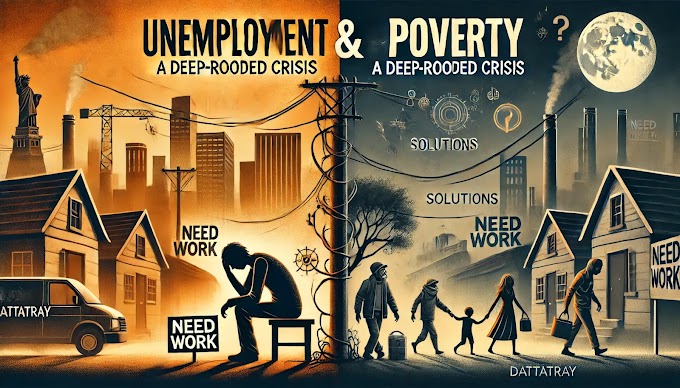Phillips Curve: Inflation and Unemployment
Introduction -
Phillips Curve is a curve which advocates the relationship between Inflation and unemployment in the economy. As per the Phillips curve there is a "trade off" between inflation and unemployment. It means there is an inverse relation between inflation and unemployment. According to Phillips curve the lower the inflation, higher the unemloumetn and higher the inflation, lower the unemployment.
Who has given this concept or theory ?
Phillips curve was developed by Alban William Housego Phillips, He was an electrical engineer from New Zealand and was an economist at the London School of Economics.
Background of Phillips Curve (PC) -
In 1958, the Zealander economist William Phillips carried out an Empirical Study of the British economy, using data for the period from 1861 to 1957. This study estimates the relationship between the unemployment rate and the rate of change in the money wage as an indicator of inflation, given that wages represent a large proportion of 6 the cost and thus the price, the results of the study reveal the presence of a trade-off between the unemployment rate and the rate of change in wages as a representative of the rate of inflation.

Economist Phillips interpreted the result of the study, that in booms, the demand for labor increase and the unemployment rate decrease then workers have the opportunity to request higher wages while in periods of depression, the demand for labor decrease and unemployment rate increase then the ability of workers to demand higher wages is limited and decreasing wage rate increase significantly. This finding supports Keynesian thought; therefore, a number of economists in the United States were encouraged to measure the relationship between inflation and unemployment using data on the U.S. economy. The studies revealed the inverse relationship between the two variables, which led to consolidate the results of a Phelps' study and dubbed this relationship as the Phillips curve.
Limitation -
By the early 1970s, two American economists Milton Friedman and Edmund Phelps challenged the idea of the Phillips curve. According to these two economists the trade between inflation and unemployment was only short-term, because once people came to expect higher inflation they started demanding higher wages and thus unemployment will rise back to its 'Natural Rate'.
It means this concept is only applicable for a short period of time (Until people realise that there is inflation in our country). As long as there is inflation in the country and people don't know about it, there will be higher inflation and lower unemployment. But once people know that there is inflation going on in our country, they will start demanding higher wages. Because there is more supply, higher prices, higher wages in inflation, Hence this concept is really useful / helpful for the government to make policies in short terms, but will not give best results in long term.
. . .
Thanks for reading ( Have A Great Day :)
There is always enough for the needy, there is never enough for the greedy. - Mahatma Gandhi
You can view in PDF here -
Main Source: My Notes









.png)

.png)
.png)
.png)
.gif)
0 Comments